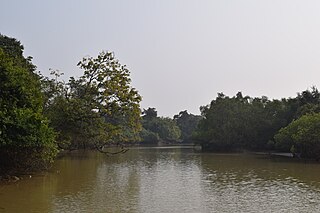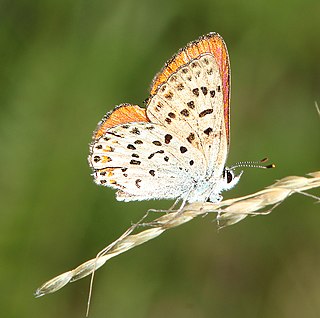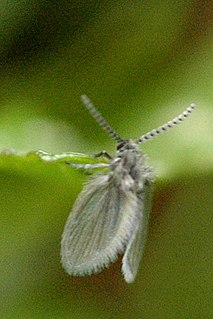
Convolvulaceae, known commonly as the bindweed or morning glory family, is a family of about 60 genera and more than 1,650 species of mostly herbaceous vines, but also trees, shrubs and herbs, and also including the sweet potato and a few other food tubers.

Tilapia is the common name for nearly a hundred species of cichlid fish from the coelotilapine, coptodonine, heterotilapine, oreochromine, pelmatolapiine, and tilapiine tribes, with the economically most important species placed in the Coptodonini and Oreochromini. Tilapia are mainly freshwater fish inhabiting shallow streams, ponds, rivers, and lakes, and less commonly found living in brackish water. Historically, they have been of major importance in artisanal fishing in Africa, and they are of increasing importance in aquaculture and aquaponics. Tilapia can become a problematic invasive species in new warm-water habitats such as Australia, whether deliberately or accidentally introduced, but generally not in temperate climates due to their inability to survive in cold water.

Bhitarkanika Mangroves is a mangrove wetland in Odisha, India, covering an area of 650 km (400 mi) in the Brahmani and Baitarani river deltas.

The Encyclopedia of Life (EOL) is a free, online collaborative encyclopedia intended to document all of the 1.9 million living species known to science. It is compiled from existing databases and from contributions by experts and non-experts throughout the world. It aims to build one "infinitely expandable" page for each species, including video, sound, images, graphics, as well as text. In addition, the Encyclopedia incorporates content from the Biodiversity Heritage Library, which digitizes millions of pages of printed literature from the world's major natural history libraries. The project was initially backed by a US$50 million funding commitment, led by the MacArthur Foundation and the Sloan Foundation, who provided US$20 million and US$5 million, respectively. The additional US$25 million came from five cornerstone institutions—the Field Museum, Harvard University, the Marine Biological Laboratory, the Missouri Botanical Garden, and the Smithsonian Institution. The project was initially led by Jim Edwards and the development team by David Patterson. Today, participating institutions and individual donors continue to support EOL through financial contributions.
iNaturalist is a social network of naturalists, citizen scientists, and biologists built on the concept of mapping and sharing observations of biodiversity across the globe. iNaturalist may be accessed via its website or from its mobile applications. As of February 2021, iNaturalist users had contributed approximately 66 million observations of plants, animals, fungi, and other organisms worldwide, and around 130,000 users were active in the previous 30 days.
Rhinoplatia ruficollis is a species of false blister beetle in the family Oedemeridae. It is found in North America.
Rhinoplatia is a genus of false blister beetles in the family Oedemeridae. There are at least two described species in Rhinoplatia.

Eunica tatila, the Florida purplewing, is a species of tropical brushfoot in the butterfly family Nymphalidae. It is found in North America.
Spilomyia foxleei is a species of syrphid fly in the family Syrphidae.
Ectecephala laticornis is a species of grass fly in the family Chloropidae.
Gymnocarena bicolor is a species of fruit fly in the family Tephritidae.

Historis acheronta, the tailed cecropian, is a species of crescents, checkerspots, anglewings, etc. in the butterfly family Nymphalidae.
Opilioacarus texanus is a species of mite in the family Opilioacaridae.
Aradus implanus is a species of flat bug in the family Aradidae. It is found in North America.
Nausigaster texana is a species of syrphid fly in the family Syrphidae.
Lycaena xanthoides, the great copper, is a species of copper in the butterfly family Lycaenidae. It is found in North America.

Lycaena gorgon, known generally as the gorgon copper or stream water-crowfoot, is a species of copper in the butterfly family Lycaenidae. It is found in North America.

Aeshna clepsydra, the mottled darner, is a species of darner in the dragonfly family Aeshnidae. It is found in North America.

Psychoda is a genus of moth flies in the family Psychodidae. There are more than 400 described species in Psychoda.

Leptoglossus gonagra, known as the passionvine bug, citron bug or squash bug in different parts of its range, is a species of leaf-footed bug in the family Coreidae. It is found in Africa, the Caribbean, Central America, North America, South America, Southern Asia, the Pacific Ocean and Oceania.









